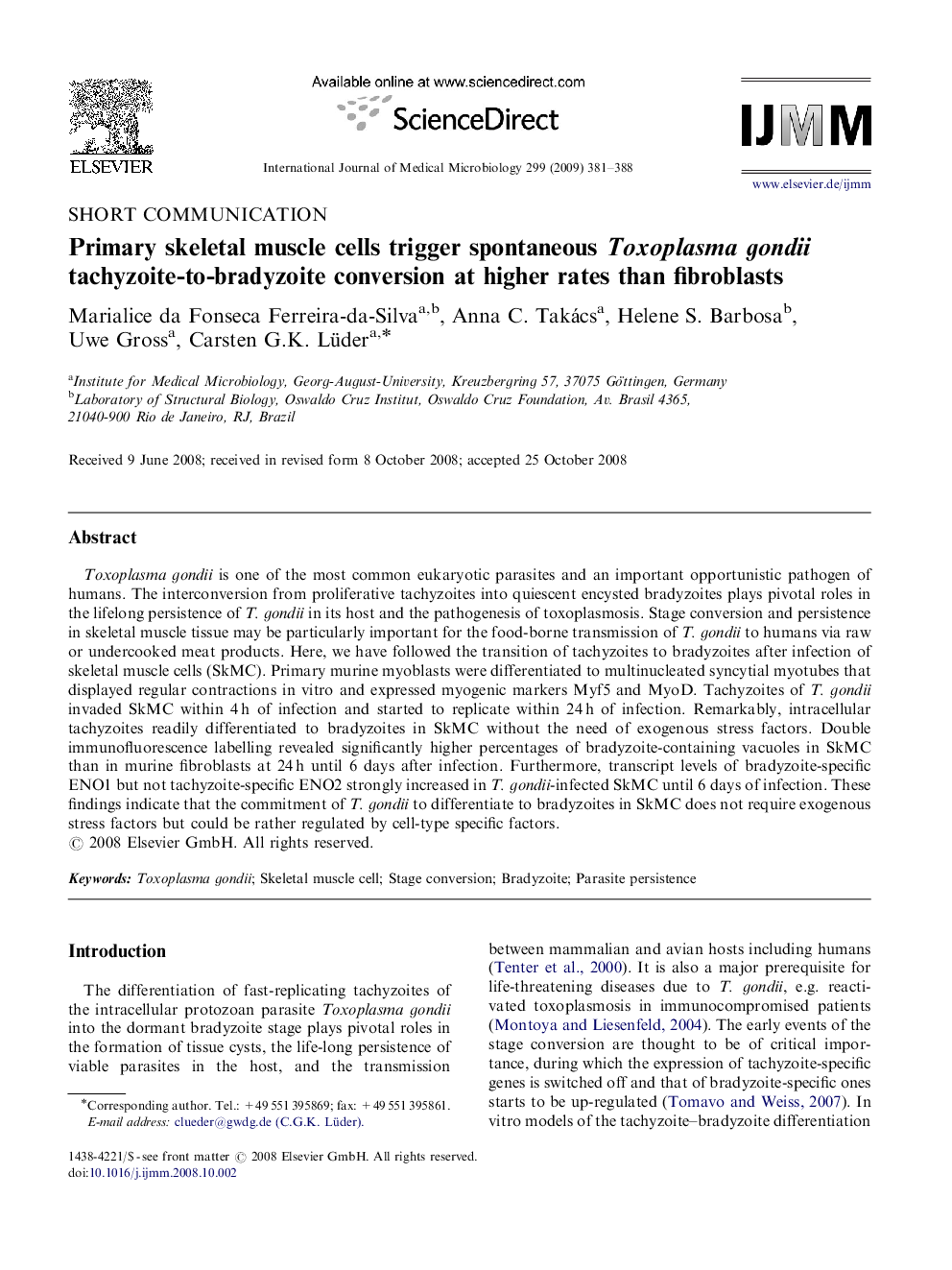| Article ID | Journal | Published Year | Pages | File Type |
|---|---|---|---|---|
| 2054238 | International Journal of Medical Microbiology | 2009 | 8 Pages |
Toxoplasma gondii is one of the most common eukaryotic parasites and an important opportunistic pathogen of humans. The interconversion from proliferative tachyzoites into quiescent encysted bradyzoites plays pivotal roles in the lifelong persistence of T. gondii in its host and the pathogenesis of toxoplasmosis. Stage conversion and persistence in skeletal muscle tissue may be particularly important for the food-borne transmission of T. gondii to humans via raw or undercooked meat products. Here, we have followed the transition of tachyzoites to bradyzoites after infection of skeletal muscle cells (SkMC). Primary murine myoblasts were differentiated to multinucleated syncytial myotubes that displayed regular contractions in vitro and expressed myogenic markers Myf5 and MyoD. Tachyzoites of T. gondii invaded SkMC within 4 h of infection and started to replicate within 24 h of infection. Remarkably, intracellular tachyzoites readily differentiated to bradyzoites in SkMC without the need of exogenous stress factors. Double immunofluorescence labelling revealed significantly higher percentages of bradyzoite-containing vacuoles in SkMC than in murine fibroblasts at 24 h until 6 days after infection. Furthermore, transcript levels of bradyzoite-specific ENO1 but not tachyzoite-specific ENO2 strongly increased in T. gondii-infected SkMC until 6 days of infection. These findings indicate that the commitment of T. gondii to differentiate to bradyzoites in SkMC does not require exogenous stress factors but could be rather regulated by cell-type specific factors.
